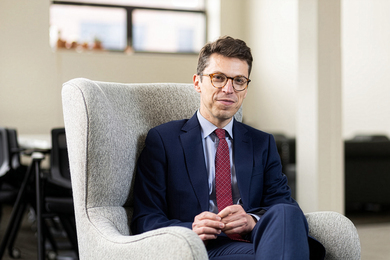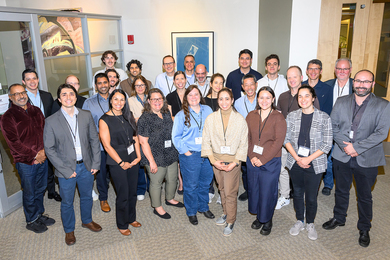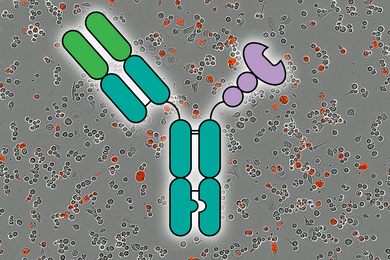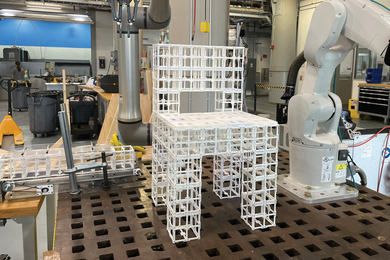Laying the foundation for treating biological entities as complex living systems rather than an amalgam of individual molecules, the MIT Computational and Systems Biology Initiative (CSBi) hosted more than 300 participants from academia and industry at its first annual conference at MIT Jan. 9-10.
The ability to better understand and predict the actions of complex biological systems is expected to lead to advances in drug design, disease diagnosis, biologically inspired computers, environmental health and national defense.
Until now, biologists "have learned more and more about the detailed structure and functions of the molecular components of life, but we have not yet understood how individual components are networked to control physiology," said MIT President Charles M. Vest at the conference. "Now we are in a position to begin the search to understand our molecular machines and cell circuitry -- how the parts are connected and how they operate. In a third revolutionary transformation, biology will become a systems science."
CSBi, established in 2002, is an MIT-wide program linking biology, engineering and computer science in a systems biology approach to the study of cell-to-cell signaling, tissue formation and cancer. CSBi supports and manages research, education and outreach programs as a virtual center with faculty drawn from 10 departments and centers.
Vest emphasized CSBi's strong educational focus. The virtual entity is offering a new Ph.D. program and accepting its first graduate students next year. The students will be able to apply this multi-dimensional approach to biology in almost any laboratory on campus.
Douglas Lauffenberger, the Whitaker Professor of Chemical Engineering, Bioengineering and Biology and co-director of the MIT Biological Engineering Division; Thomas Bumol of Lilly Research Laboratories; Martin Schmidt, professor of electrical engineering and computer science and director of the MIT Microsystems Technology Laboratories; Anthony J. Sinskey, professor of biology; and Stephen Harrison of Harvard Medical School gave perspectives during the two-day conference on systems biology, microelectronic mechanical systems, drug discovery and the newest approach to structural biology.
Lauffenberger said that molecular biology described the organism--"an incredibly complex biological machine"--in terms of its tiniest components. Then genomics came along to create a comprehensive parts list of the same organism. But "a parts list is not enough," Lauffenberger said. The current goal is to return to the system level, with the ultimate intent of achieving the ability to predict the system's performance--an ability that has proved extremely difficult to date.
CSBi includes initiatives as diverse as computational neuroscience and using biological entities in hybrid electronic and magnetic materials.
In addition to needing more data about fundamentals such as cell dynamics, "At MIT, we believe a bottleneck is in measurement," Lauffenberger said. CSBi emphasizes experimental measurement approaches, he said, and will also invent new devices to make measurements better.
In a talk on "Drug Discovery and the New Biology," Sinskey said that the pharmaceutical industry is facing a unique set of challenges in the coming decade. The "easy" drugs have already been discovered, he said, and many products' patents are expiring. This means that the industry will probably look to systems biology to provide new techniques and approaches to tackle the next round of complicated diseases such as diabetes and multiple sclerosis.
The conference was sponsored by the Department of Biology, the Biological Engineering Division, the Department of Electrical Engineering and Computer Science, the Center for Cancer Research, the Center for Environmental Health Sciences, the Industrial Liaison Program and the Whitehead Institute.







